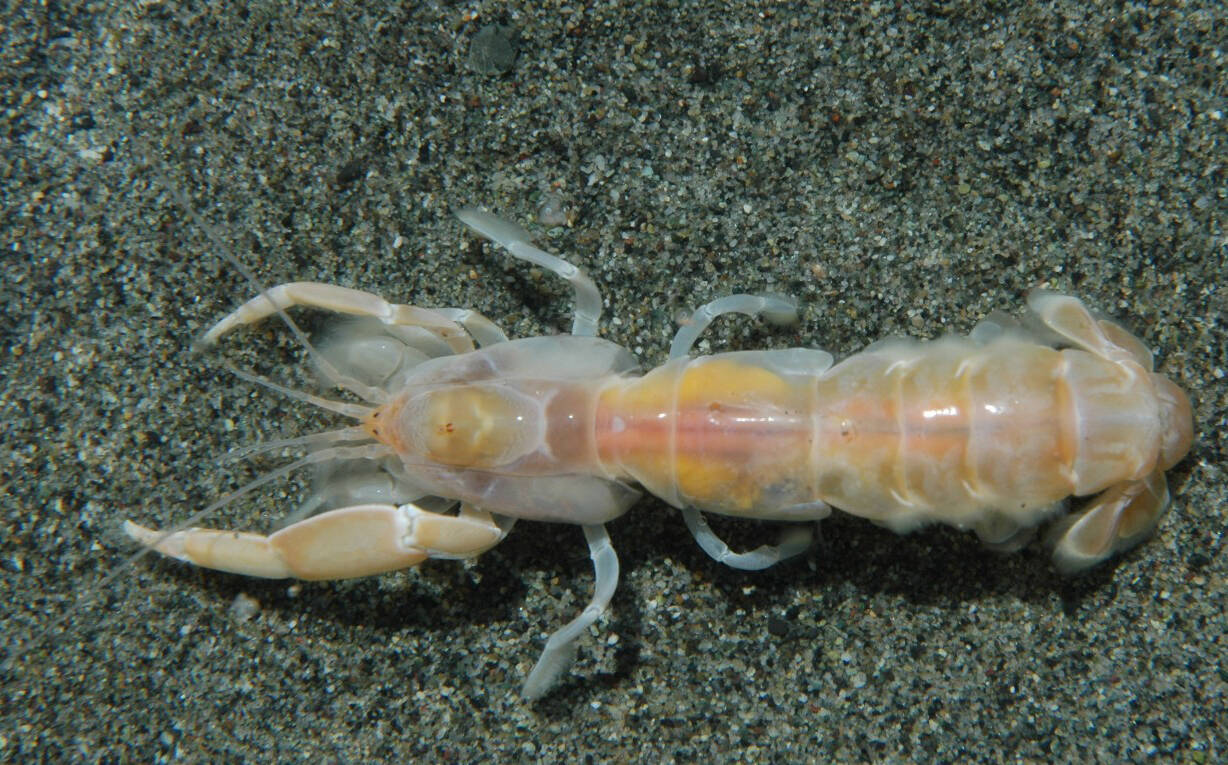Ghost shrimp are a popular freshwater aquarium species enjoyed for their scavenging nature and transparent bodies. But some curious aquarists have pondered – can you eat ghost shrimp? Are they safe for human consumption straight from the tank?
In this article, we’ll explore the viability of eating home-raised ghost shrimp. We’ll cover health considerations, prep methods, expected taste and texture, and compare them to commercial shrimp varieties. Read on to satisfy your curiosity about this unconventional seafood possibility!
An Overview of Ghost Shrimp
Let’s first review some basics about these unusual see-through crustaceans
-
Scientific name – Palaemonetes paludosus
-
Native to – Streams, rivers and estuaries of southeastern United States
-
Size – Up to 2 inches long as adults
-
Life span – 1-2 years with proper care
-
Diet – Detritus, algae, fish food, sometimes small insects
-
Behavior – Non-aggressive bottom dwellers and scavengers
Is It Safe to Eat Ghost Shrimp from a Home Aquarium?
The biggest question is whether tank-raised ghost shrimp carry any risks for human consumption. Here are some key considerations:
-
Freshwater vs saltwater – Saltwater shrimp tend to be safer due to the ocean’s purifying nature. Freshwater species have higher parasite potential.
-
Wild-caught vs captive-bred – Wild shrimp may harbor more parasites, so captive-raised has lower risk. Quarantining new shrimp is advisable.
-
Aquarium conditions – Good water quality and clean conditions lower chances of transmitted pathogens. Tanks with issues could breed higher risk.
-
Cooked vs raw – As with any shellfish, cooking thoroughly kills potential bacteria and parasites. Eating raw poses greater hazards.
So while not completely risk-free, ghost shrimp from a well-maintained freshwater tank are reasonably safe to eat if cooked properly. Some additional precautions can further reduce any health concerns.
Precautions and Proper Preparation for Eating Ghost Shrimp
To make tank-raised ghost shrimp as safe as possible for eating:
-
Quarantine new shrimp for 30-60 days before adding to main tank
-
Maintain excellent water quality – 0 ammonia and nitrites, low nitrates
-
Avoid overcrowding and minimize tank pest problems like Planaria
-
Feed shrimp a high quality diet to optimize nutrition and health
-
Cook shrimp thoroughly until opaque and hot throughout (boiling, grilling, sautéing)
-
Remove shells, legs and heads which can harbor higher bacteria levels
-
Start with small portion to assess tolerance before consuming larger amounts
Adhering to sound aquaculture practices and proper cooking methods reduces potential health risks when eating home-raised aquarium shrimp.
How Do Ghost Shrimp Taste When Cooked?
Assuming they are safely prepared, what is the flavor and texture of cooked ghost shrimp like? Here are some key points:
-
Texture – Firmness similar to rock shrimp when cooked. Pleasantly chewy bite.
-
Flavor – Mild, sweet taste comparable to small pink shrimp. Not fishy or ammonia-tasting if fed a good diet.
-
Color – Turns orange-pink when heated like commercial shrimp varieties. No longer translucent.
-
Size – Average cooked size of 1-1.5 inches. Cocktail or salad shrimp size.
-
Yield – About 1 pound of edible shrimp per 20 adults due to discarded shells and heads.
So when properly cooked, ghost shrimp offer a mildly sweet, shrimp-like taste and become pink in color like store-bought varieties. Their petite size makes them suitable for shrimp cocktails or other appetizer dishes.
How Do Ghost Shrimp Compare to Commercial Shrimp Varieties?
So how do home-grown ghost shrimp stack up against traditional seafood shrimp in terms of use and flavor?
-
Meat yield – Lower than commercial shrimp since ghost shrimp yield mostly tail meat. Larger shrimp have more usable meat.
-
Preparation effort – More labor intensive to cook due to removing legs/shells and cooking many individuals for a meal-sized amount.
-
Taste – Comparable sweetness and shrimp flavor, but less robust taste than larger, marine shrimp.
-
Cost – Ghost shrimp have minimal feed cost, but commercial shrimp can cost just a few dollars per pound.
-
Applications – Suited for any cocktail, salad, sushi, or sauce recipe needing bite-sized shrimp.
While edible, tank-raised ghost shrimp do require more prep work compared to store-bought options. Their petite size also limits meat yield. But their free availability and decent taste make them a viable alternative.
Other Species of Freshwater Shrimp You Can Eat
If interested in eating home-raised shrimp, ghost shrimp aren’t your only option. Consider these other freshwater species:
-
Amano shrimp – Larger size up to 2.5 inches gives better meat yield. Need brackish water to breed.
-
Cherry shrimp – Bright red color and sweet taste but tiny size under 1 inch. Prolific breeders.
-
Bamboo shrimp – One of largest species at over 3 inches. Require pristine water.
-
Vampire shrimp – Unusual bluish hues. Max around 4 inches. Somewhat challenging to keep.
-
Crystal red/black shrimp – Vibrant white, red and black color morphs. Decent 1-1.5 inch size when adult.
So for an interesting shrimp harvest, try breeds like amanos, vampires or crystals. Avoid minuscule varieties under an inch that yield little meat.
Can you eat ghost shrimp and other feeder-sized freshwater shrimp? While not completely risk-free, they can be a safe, viable seafood if precautions are followed. When properly cooked, these shrimp offer a pleasantly mild, sweet flavor profile. Their miniature size does limit meat quantity but allows for creative appetizer uses. While not comparable to jumbo shrimp,common aquarium shrimp can provide a free, fun alternative harvest to enjoy.

Named Best Local-Foods Blog
- finspotcook AT gmail Dot com
Finalist WA State Book Award
- Click here for classes and events.
